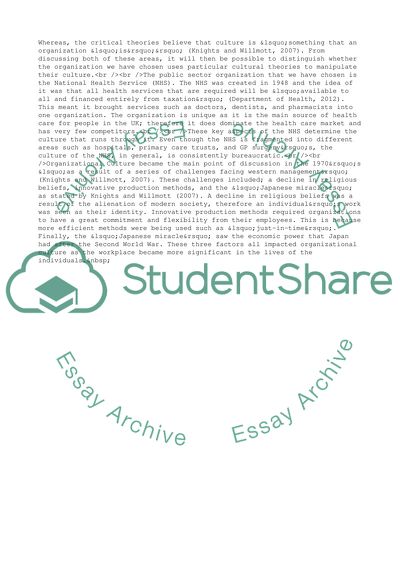Cite this document
(To What Extent Is It Possible to Manage Organizational Culture Coursework Example | Topics and Well Written Essays - 2000 words, n.d.)
To What Extent Is It Possible to Manage Organizational Culture Coursework Example | Topics and Well Written Essays - 2000 words. https://studentshare.org/management/1772120-group-assignment-to-what-extent-is-it-possible-to-manage-organisational-culture
To What Extent Is It Possible to Manage Organizational Culture Coursework Example | Topics and Well Written Essays - 2000 words. https://studentshare.org/management/1772120-group-assignment-to-what-extent-is-it-possible-to-manage-organisational-culture
(To What Extent Is It Possible to Manage Organizational Culture Coursework Example | Topics and Well Written Essays - 2000 Words)
To What Extent Is It Possible to Manage Organizational Culture Coursework Example | Topics and Well Written Essays - 2000 Words. https://studentshare.org/management/1772120-group-assignment-to-what-extent-is-it-possible-to-manage-organisational-culture.
To What Extent Is It Possible to Manage Organizational Culture Coursework Example | Topics and Well Written Essays - 2000 Words. https://studentshare.org/management/1772120-group-assignment-to-what-extent-is-it-possible-to-manage-organisational-culture.
“To What Extent Is It Possible to Manage Organizational Culture Coursework Example | Topics and Well Written Essays - 2000 Words”. https://studentshare.org/management/1772120-group-assignment-to-what-extent-is-it-possible-to-manage-organisational-culture.


